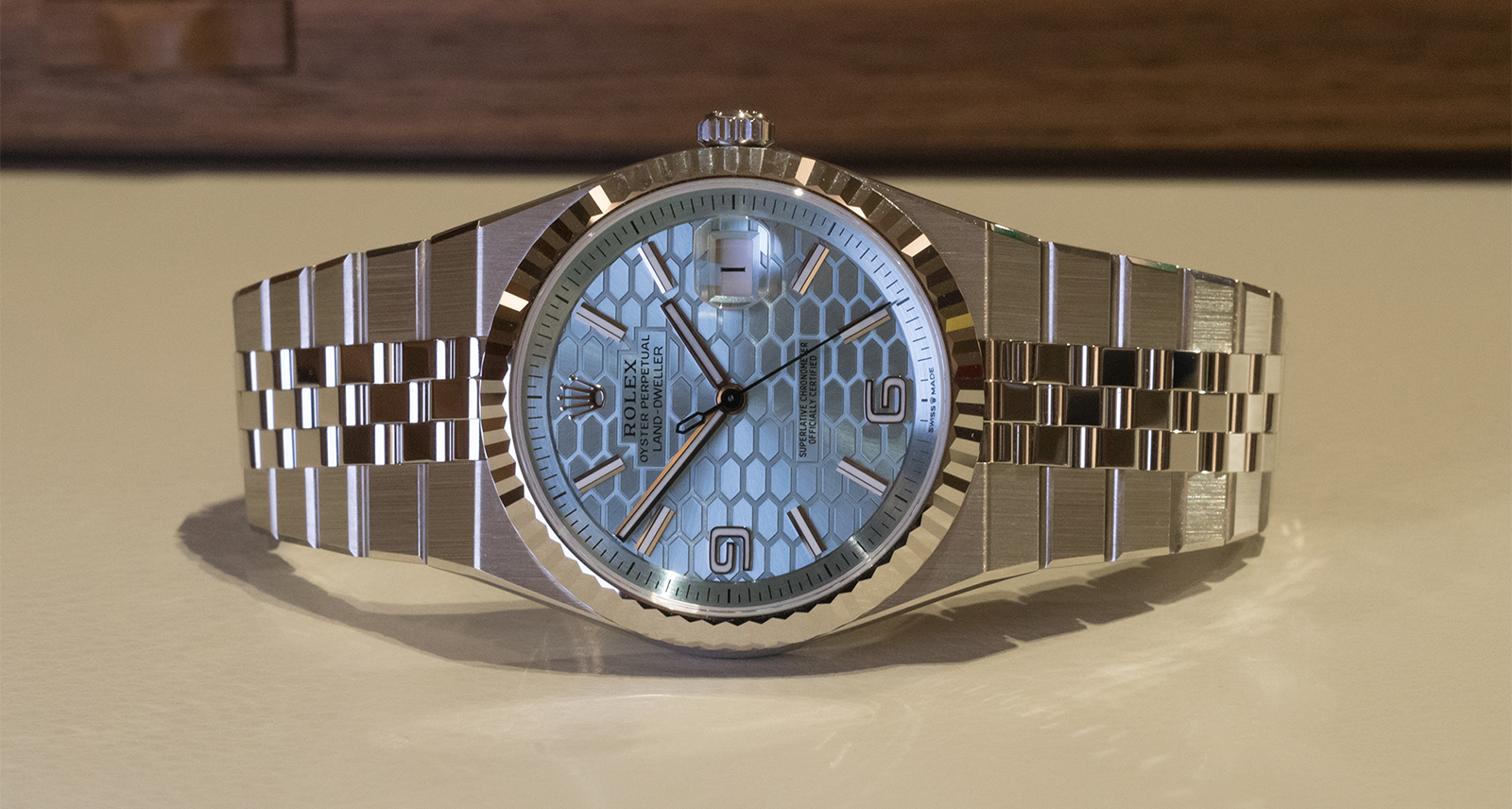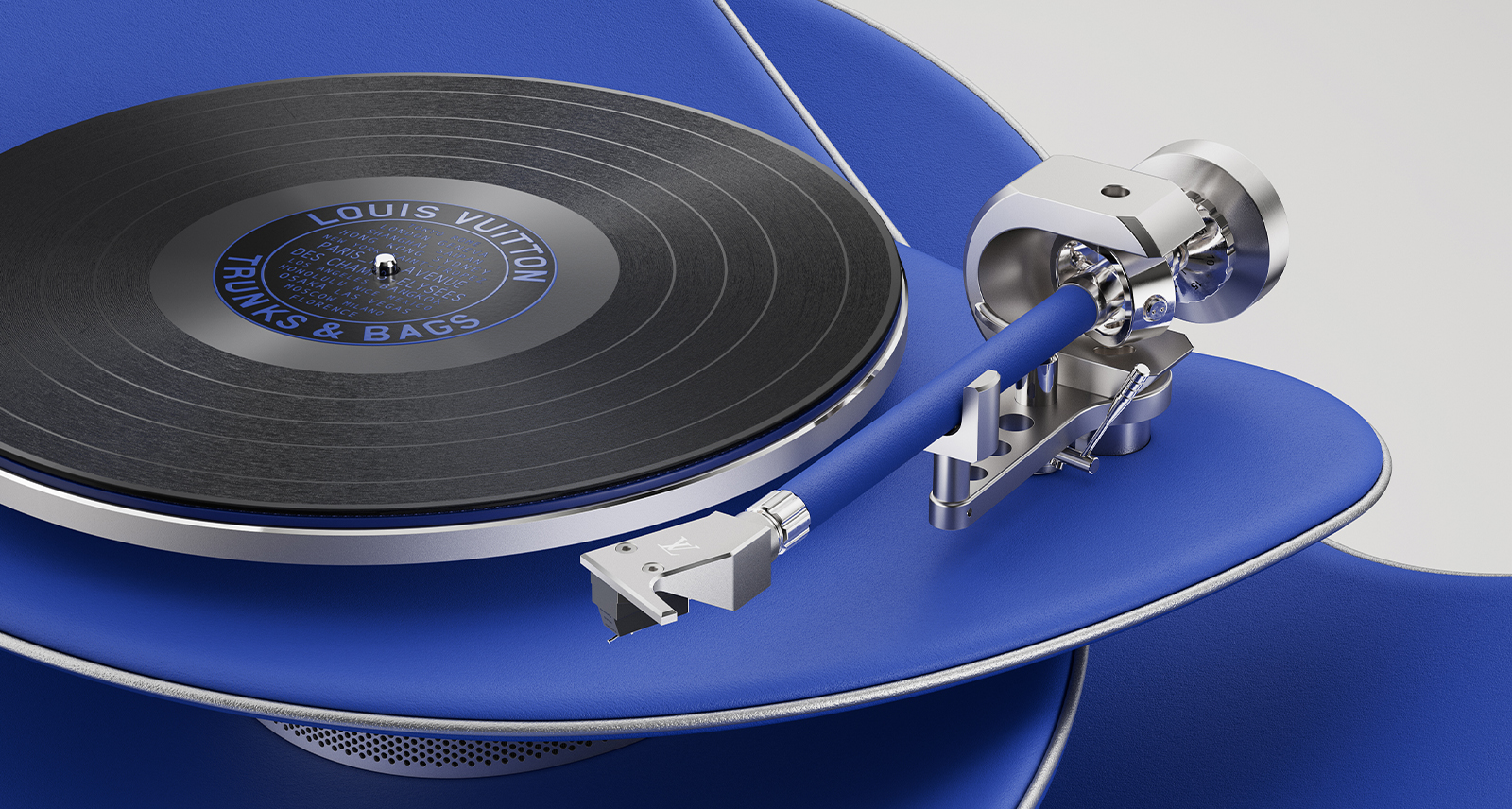Diving Into the Rolex Land-Dweller: A New Caliber To Change the Game
There’s no escaping Rolex at Watches and Wonders; we all know this. It’s the brand everyone is watching, as well as the brand that everyone seems to be itching to discuss and debate as soon as they break cover on the year’s new models. This year is no different, as the all-new Rolex Land Dweller took centre stage at Watches and Wonders. The new integrated bracelet reference was hands-down the talk of the fair — a stark departure from conventional Rolex design, but most notably a watch that carries with it a significant amount of technical advancement for the brand as a whole.

Shown alongside a number of technical updates and new colourways for the Daytona, GMT-Master II, and other references, the Rolex Land-Dweller completes the trilogy alongside the Sea-Dweller and Sky-Dweller. It’s the first use of an integrated bracelet at Rolex since the days of the Oysterquartz, and features a charming new honeycomb motif dial with both batons and Arabic numerals as indices. Integrated bracelets have been all the rage these past few years, and the Land-Dweller easily ticks all the boxes for those wanting to embrace this style of watch with a distinct Rolex twist. That said, there’s a lot more to discuss “under the hood” of this new release.
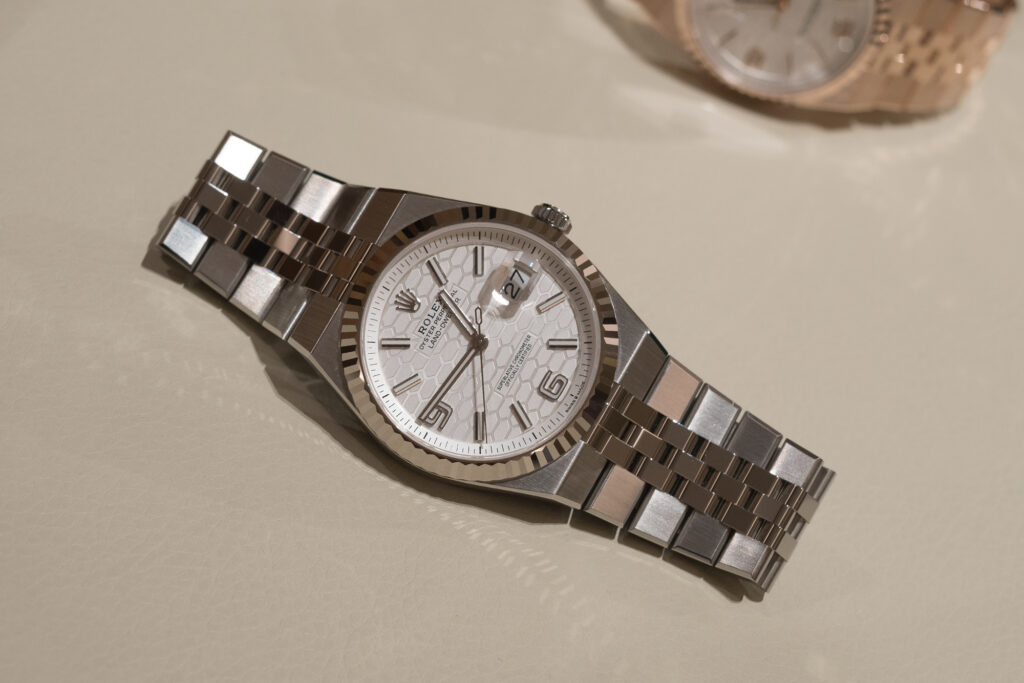
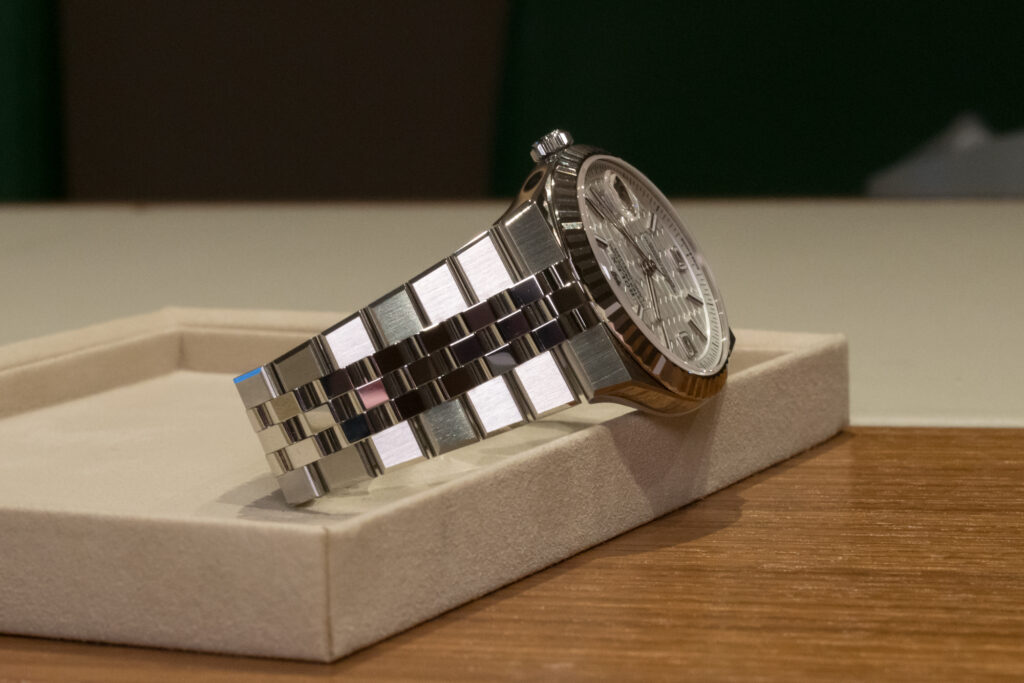
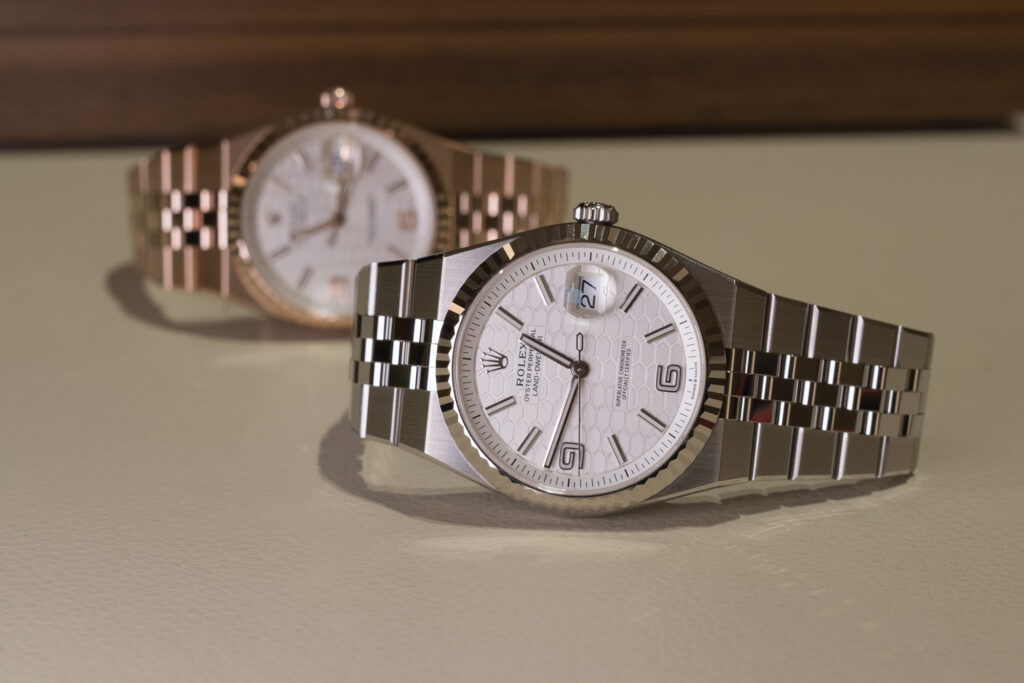
Beating inside the Land-Dweller is the new Rolex caliber 7135 — a slender self-winding caliber with 66-hours of power reserve regulated to the brand’s standard -2/+2 seconds per day. That mostly sounds like “business as usual” for a Rolex movement, however the 7135 is fitted with a new escapement called Dynapulse — a new innovation made primarily out of silicon components to improve resistance to magnetism, and designed to operate at 36,000 beats per hour, rather than the standard 28,800 of all other current Rolex calibers. Interestingly, during our meeting it was pointed out by Rolex that the Land-Dweller has a higher resistance to magnetism than the discontinued Milgauss, which was originally engineered specifically to be highly protected from magnetic fields. In contrast, the Milgauss used a soft iron Faraday Cage to protect its caliber, whereas the Land-Dweller relies solely on the use of anti-magnetic silicon components.
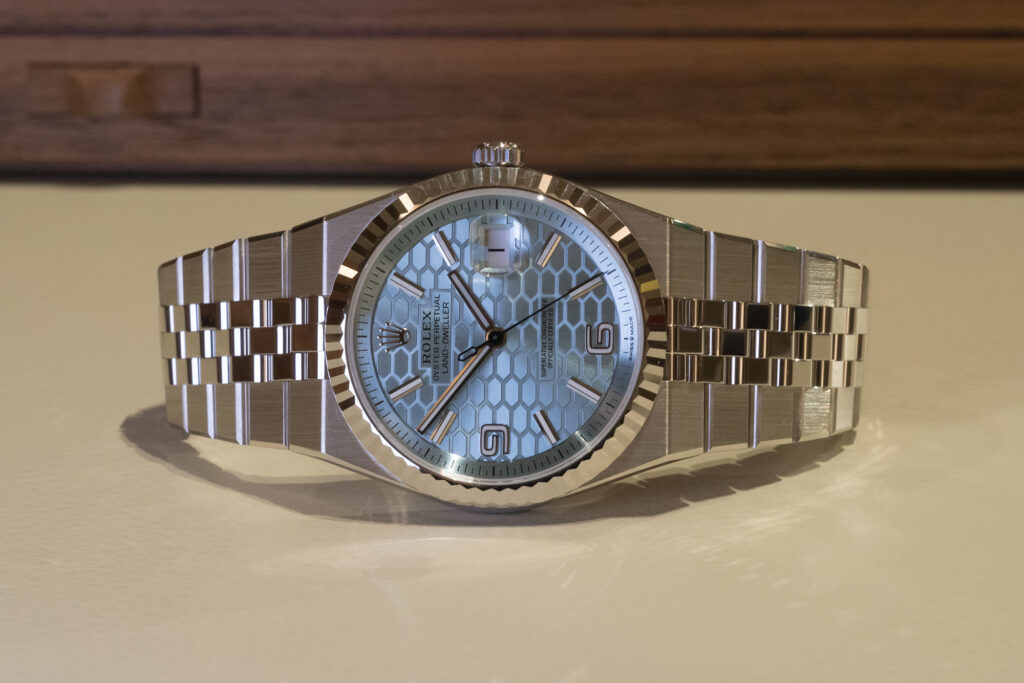
For those unfamiliar with the granular intricacies of watchmaking, we can hear the “But what does that mean?” coming through our monitors. In short, a higher beat rate means better accuracy and stability of the movement. More beats within every minute means that there are more oscillations in that timeframe that can course correct if your watch experiences any kind of unforeseen shock, vibration, or g-forces that would temporarily destabilize things. In trade, a higher beat rate generally equals a lower power reserve, though Rolex seems to have had no trouble keeping that specification high without making the caliber larger in size to accommodate a larger mainspring.
Though there’s no doubt that the Land-Dweller will be a commercial success for Rolex, the bigger story here is this new caliber and what comes next. This new high frequency caliber, is a sign of things to come; Rolex doesn’t innovate on one movement without the intent of using that innovation elsewhere.
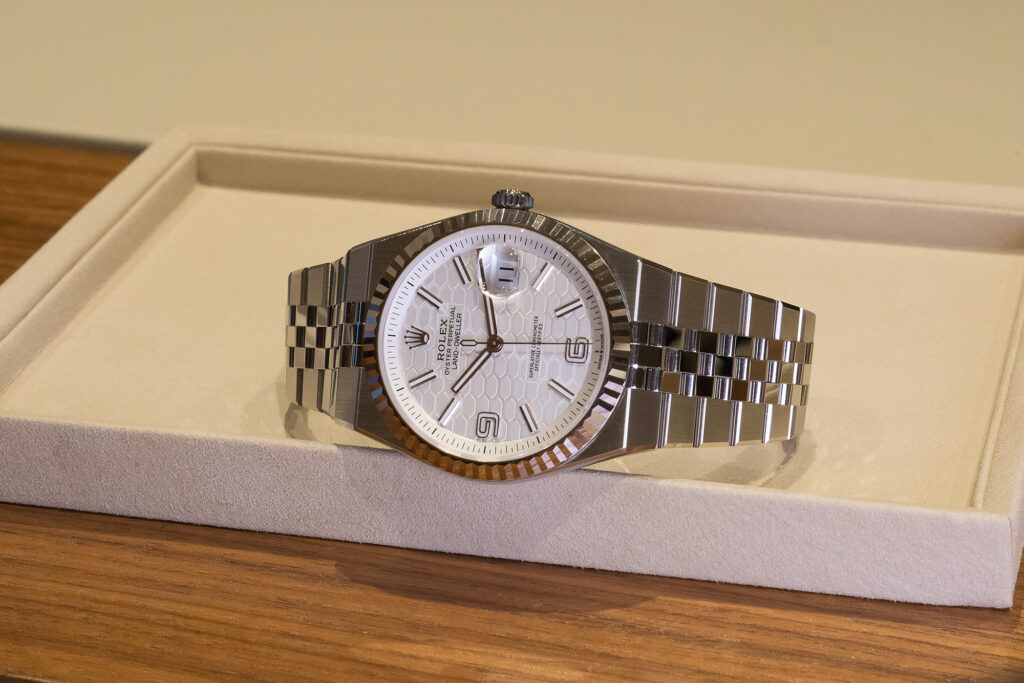
Our speculation? Next year’s releases will be fitted with this new escapement and operating frequency, eventually leading to a new Rolex Daytona with a 36,000 beats-per-hour caliber. It’ll take a while, no doubt, but we’d bet on this coming within the next 8 years. Perhaps for the Daytona’s 70th anniversary in 2033? With the last Daytona update having taken place in 2023 that math makes sense, though the question is whether they surprise us early at the 65th anniversary, or make us all wait for the 75th milestone. Either way, we’ll see more time-only watches make this move along the way.
